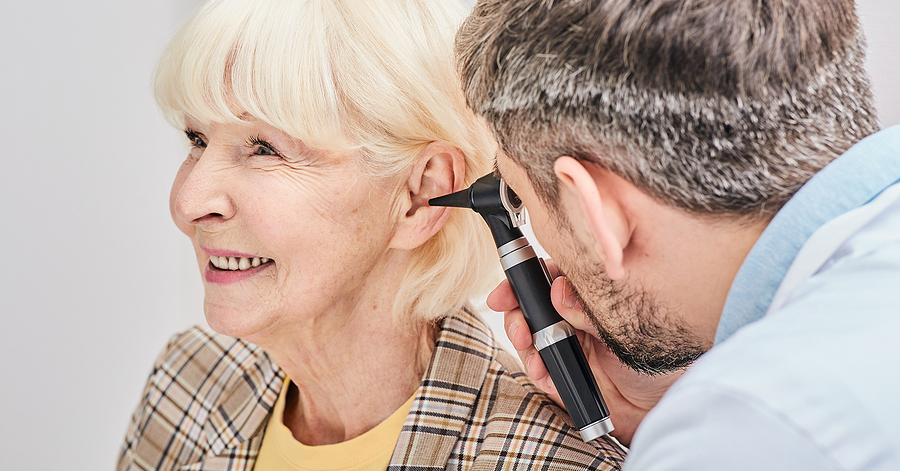If there’s one thing that all of our ears have in common, it’s that they produce ear wax. And even though it may seem like a nuisance or a grooming problem, ear wax is a critical part of a healthy ear. It plays an integral role in protecting your ear canals and eardrums from harm. But the trick is that ear wax only works when you have exactly the right amount.
If you have too little, you can end up with itchy, infection-prone ears. If you have too much, you may have hearing loss and have trouble hearing conversations, among other problems.
In either case, you might end up with an appointment with a hearing professional to find out what’s going on. And since audiologists or Doctors of Audiology are front-line ear care professionals, that’s who you’ll likely see.
When you do, they’ll examine each ear canal and give you a hearing test to check for hearing loss. If they determine that you have too much earwax buildup, they’ll perform an earwax removal and clean your ears for you.
Then your hearing professional will conduct a hearing test to check for hearing loss again to see if your results improve. But to understand why you’ll first need to understand a bit about ear wax. And we can help you with that.
Here’s everything you need to know about ear wax. We’ll cover what it is, why it’s important, and how to know when to see an audiologist for an ear wax removal. Let’s get started, shall we?
What Is Ear Wax?
Ear wax — also known as cerumen — is a substance our bodies produce to protect our ears. Despite its common name, ear wax isn’t really wax at all. It’s a combination of skin cells, sweat, dirt, and a substance called sebum. It’s the sebum that lends ear wax its sticky texture — because it’s made mostly of fat. And as unpleasant as that sounds, ear wax is an important part of your ear’s natural defenses.
Why Is Ear Wax Important?
There are several reasons that ear wax is important. First, it has antibacterial and lubricating properties. So it helps prevent itchy ears and infections. It’s also a substance that works with the fine hairs in your ear canal to keep foreign matter from getting too close to your eardrums.
But if you have too much of it — you may experience what seems like the early signs of hearing loss or other hearing loss issues. This is one of the main reasons that you should clean your ears regularly.
If you don’t, your apparent hearing loss issues will continue to worsen and may harm your quality of life. But beware, if you don’t clean your ears safely, you might even cause real permanent hearing loss. Three earwax removal methods that are safe are:
Over-the-Counter Ear Wax Softeners
Over-the-counter ear wax softener such as those made by Murine, Debrox, and others. The majority of these products will have peroxide, glycerin, mineral oil, and peroxide.
If you use an OTC softener, make sure to follow the instructions on the package to remove earwax. Failure to follow the instructions could cause ear infections and harm your hearing health.
Protect Your Hearing Health with Warm Water
If you can’t make it to the store, warm water is a safe, homeopathic method of earwax removal. Simply use warm saline water and allow it to run in your ear. Another option is to use an irrigation kit.
Have Your Ears Cleaned by Using a Syringe
You can also rinse your ear canal with warm water and a syringe to irrigate your ear.
When To Schedule an Appointment with an Audiologist for Professional Wax Removal
The trouble with ear wax buildup is that you can’t feel it and you can’t see it — at least not where it will cause you trouble. For ear wax to cause noticeable hearing loss it must block your ear canal.
When that happens, you may have a problem hearing when there is a noisy background, if there is a soft voice, in group gatherings, and in other conditions. In either case, if you’re experiencing signs as mentioned above, your earwax is probably already at a point that it’ll be hard to treat on your own.
Cerumen Impaction
One common condition associated with earwax buildup is cerumen impaction, which is a significant accumulation of earwax. Common signs of cerumen impaction include:
- A noticeable problem hearing in the affected ear
- Problems hearing someone with a soft voice
- Family members or coworkers remark about your missing statements
- Problems hearing in loud rooms or group gatherings
- Complications understanding conversations
- And other symptoms associated with hearing loss
In addition, earwax blockage can cause other common signs such as earache, dizziness, a fullness feeling in the ear, and a cough. If you experience any of these signs, you should schedule an appointment with the audiologist at North Shore Hearing for an examination, hearing test and/or hearing survey.
Contact North Shore Hearing P.C. Today for Professional Earwax Removal
At North Shore Hearing P.C., our audiologist is specially trained to perform an accurate hearing test to detect early signs of hearing loss. As doctors of audiology, our audiologist specializes in detecting the early signs of hearing loss.
In the event we do, we offer an array of customizable solutions, including different types of hearing aids, to help remedy your hearing loss and improve your quality of life.
Contact North Shore Hearing P.C. today for ear wax removal, hearing aids, or to schedule your hearing survey.


